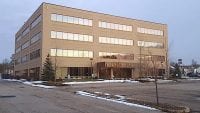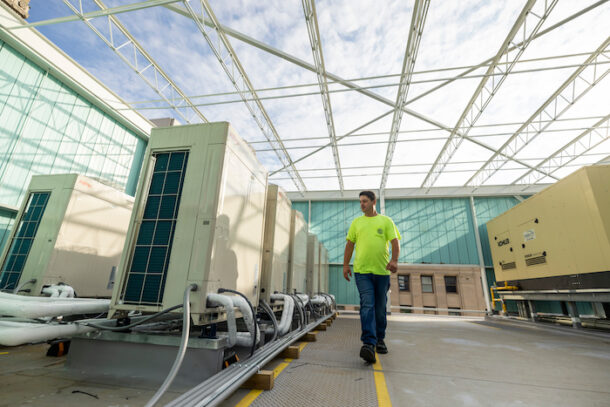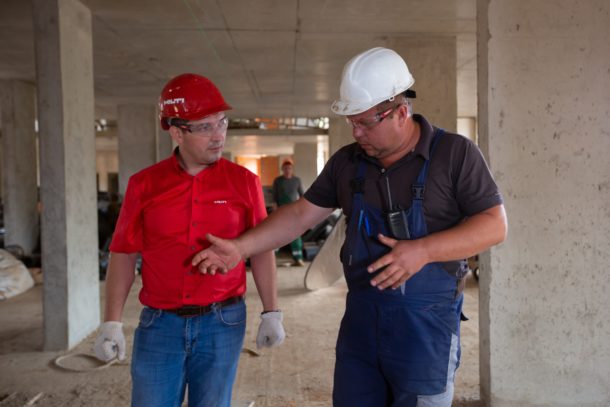Having a factory to run can be a very rewarding experience, if you approach it in the right way. If you are keen to try and make sure you are doing this right, there are a lot of things that you might want to be aware of and bear in mind here, and it might Read more
Whats New

Having a factory to run can be a very rewarding experience, if you approach it in the right way. If you are keen to try and make sure you are doing this right, there are a lot of things that you might want to be aware of and bear in mind here, and it might be simpler than you think to do this. Essentially it’s all about keeping the factory processes in line and working as efficiently and effectively as possible. In this post, we’ll take a look at how you can make sure you are doing this as well as possible.

Give Your People The Tools They Need
As long as the people who work in the factory have the proper tools in place, you will find that they are much more likely to be able to keep things running smoothly and effectively. Everything that you provide them with matters, but especially as it also relates to product creation, so you should pay particular attention to materials and tools which will be used for that – from drilling machines to adhesives and more. You can find out more about hot melt adhesives or you can simply research it yourself, but the important thing is to provide well.
Focus On Safety Above All
Safety is always paramount to everything else, and your processes ideally need to reflect that as clearly as possible. If you are doing everything you can to keep your factory processes as safe as possible for all, that is the kind of thing that is going to help the whole process along very nicely. So this is something that you should definitely think about if you want to ensure you are doing this right. With good safety measures in place and adhered to strongly, it’s going to make for a much better factory process all in all.
Identify Bottlenecks
One of the things you’ll want to watch out for when you are looking at your processes is any bottlenecks – in other words, any areas which are likely to be end-processes, therefore stultifying the process chain as a whole. These are where you need to put a lot of attention and these are what will need fixing, so it’s essential to make sure that you are aware of these as best as you can be. Once you have a good idea of the bottlenecks you have, you can start working through them.
Train People Well
Finally, the better everyone is trained, the more you are going to get out of them, and the easier they are going to find it to keep things running smoothly. So you should make sure that you are training people as well as you can, as this is the kind of thing that can really help a lot in the long run. It’s amazing how much of a difference this can really make, in fact.

Let’s talk about staying ahead of the curve in today’s business world. It’s not just about keeping up; it’s about using smart innovations to make your operations smoother, faster, and yes, even cooler. Here’s the scoop on how you can use cutting-edge tech and clever tactics to give your business that extra edge. Embracing Automation Read more
Let’s talk about staying ahead of the curve in today’s business world. It’s not just about keeping up; it’s about using smart innovations to make your operations smoother, faster, and yes, even cooler. Here’s the scoop on how you can use cutting-edge tech and clever tactics to give your business that extra edge.
 Embracing Automation And Robotics
Embracing Automation And Robotics
Imagine having a team that never sleeps, doesn’t take breaks, and always works at 100% efficiency. Well, robotics and automation are here to bring that dream close to reality. These mechanical whizzes take over the monotonous tasks, freeing up human brains for the stuff that requires a bit more creativity. Whether it’s assembling gadgets or organizing warehouse shelves, robots are making things quicker and errors fewer.
Leveraging Artificial Intelligence (AI)
AI is the brainy show-off of the tech family, and for good reason. It crunches numbers, spots trends, and even predicts what customers will want next season. Businesses are using AI to tailor recommendations, optimize routes for deliveries, and automate customer service with chatbots that can charm and solve problems at any hour. It’s like having a crystal ball, but one that’s backed by data, not magic.
Utilizing Internet Of Things (IoT)
The Internet of Things, or IoT, is like giving your business a sixth sense. Sensors and devices talk to each other and to you, giving real-time updates on everything from inventory levels to equipment health. This means you can catch a machine hiccup before it becomes a full-blown breakdown, saving time and money. It’s like everything in your business is part of a group chat, keeping everyone informed.
Advancing With Augmented Reality (AR) And Virtual Reality (VR)
Now, who wouldn’t want to try on a pair of glasses that could teleport them or show them how to fix something step-by-step? AR and VR are turning these sci-fi ideas into everyday tools. Employees can train in virtual worlds, mastering tricky procedures without any risk. And customers? They can see exactly how a new sofa might look in their living room, without moving a muscle. It’s about getting a new perspective—literally.
Innovative Materials And Sustainable Practices
Going green isn’t just good karma; it’s smart business. Using materials that are kinder to the planet attracts customers who care about these things (which is a lot of them these days). Plus, sustainable practices often mean lower energy costs and less waste. It’s a win-win, where businesses save money and help the planet.
Exploring Advanced Manufacturing Techniques
Advanced manufacturing techniques like those involving high-quality steel rule die supplies are game changers. This isn’t just about cutting shapes out of materials; it’s about precision, speed, and efficiency. High-quality dies can zap through materials with such accuracy that waste is slashed dramatically. And with better materials, these dies last longer too, which means less downtime swapping them out.
Conclusion
There you have it—turning innovations into everyday advantages isn’t just smart; it’s necessary for keeping your business on top. These tech tweaks can lead to big wins in efficiency and customer satisfaction. So why not give some of these ideas a whirl? After all, in the fast-paced world of business, staying still is the same as falling behind. So, let’s keep moving forward, shall we?

Commercial buildings take a great share of the construction market. Alongside with residential buildings, commercial premises are regularly built to provide companies, enterprises, and businesses with comfortable settlements. However, the construction of commercial and residential differs and has specifics. Workflow comfort directly influences employee performance and, consequently, the success of a business running. The creation Read more
Commercial buildings take a great share of the construction market. Alongside with residential buildings, commercial premises are regularly built to provide companies, enterprises, and businesses with comfortable settlements. However, the construction of commercial and residential differs and has specifics.
Workflow comfort directly influences employee performance and, consequently, the success of a business running. The creation of optimal conditions affects workflow efficiency and employee productivity. Thus, strict requirements are set for commercial premises. Owners and landlords must comply with them to prevent violation of working conditions.

Types of Commercial Buildings
To consider obligatory requirements it’s necessary to realize what kinds of commercial premises exist. There are several types of commercial real estate:
- offices
- retail premises
- production facilities
- warehouse facilities
- apartments and hotels
- garages and parking lots
Requirements for Commercial Buildings
Depending on the type of rooms, different requirements are set. However, two main factors are applicable to all sorts of buildings, namely:
- environmental factors
- utilities
The difference is only in the required terms. For example, for offices, hotels, retail spaces, and crowded places, it’s essential to create and maintain a comfortable indoor climate, that is, an optimal temperature and humidity. For warehouses and industrial facilities, high barrier properties against environmental aggressors are the key criterion.
How to Pick the Best Commercial Real Estate?
The list of criteria for commercial premises depends on the type of business.
To find the most suitable option, companies select buildings based on the following parameters:
- Location. Choose your location based on your goal. Will customers attend premises? Then, walking distance and availability of parking spaces nearby are important. Are you opening a warehouse? Look for a location from which it will be convenient to get to different parts of the city. Don’t forget to assess upcoming changes in city infrastructure.
- Technical characteristics of the building. In addition to the location, pay attention to the technical aspects of the room: the availability of the necessary telecommunications and utilities (water, electricity, etc.). Assess ceiling height, noise level, lighting, ventilation, and the ability to organize a loading and unloading area. Imagine how you will use the space and check whether it is feasible in the conditions of a particular room.
- Square area. This parameter depends on the size of the company and the type of business. Small businesses usually rent commercial real estate with an area of up to 100 square meters because such enterprises have a limited budget and do not need large areas. The most popular locations for small businesses are residential areas of large cities, where most of the population is concentrated. In trying to find premises for business, medium-sized companies often pay attention to areas from 100 to 500 sq. m. Still, for warehouses and industrial facilities, huge areas of over 500 sq. m. are required.
- Rental rates. Finally, compare the rental cost and evaluate whether the room is worth investing such money in and if your budget is enough to afford to get the building.
Building assessment is a vital step when searching for high-quality commercial real estate. However, it’s not enough to evaluate the exterior since the comfort of future activity on premises depends on multiple conditions. Whether you rent or purchase buildings, a thorough test of construction quality is an essential stage. Construction tightness, durability, and insulation are the key components of high-quality premises.
Blower Door Test as an Obligatory Procedure for Comprehensive Building Assessment
In this regard, blower door testing for commercial building helps sort out poor-quality premises and find a worthy option to pay for. The test implies checking rooms for lack of insulation and construction tightness. It is aimed at identifying cracks, holes, and other defects in buildings.
A blower door test is a common procedure carried out at the stage of building selection and acceptance. However, if an indoor space is not satisfying, it’s possible to order this test at any phase of room exploitation. The procedure is carried out by specialized technicians who use highly sensitive industrial fans synched to software and manometers.
Testing Procedure Steps
Globally, the procedure falls into three main phases, namely:
- Preparatory. During this stage, specialists visit a site for evaluation. They assess the area, surfaces, and construction features. A test plan is made, where specialists write down site details, prescribe the number of fans used, and appoint the place of their installation.
- Testing. Large industrial fans are installed in accordance with the plan, after which the airflow is directed. Testing implies changes in pressure; figures and indicators are recorded during testing
- Analysis. The last step implies the analysis of the obtained data, based on which the verdict is provided. If some corrections or clarifications are required, thermal imaging or smoke tests are applicable. Specialists express the result of testing in a report.
Blower door testing is an effective procedure that cannot be excessive. It’s recommended for all types of rooms.
Who Should Order Blower Door Testing for Commercial Building?
Every side that has any relation to real estate can order the test:
- landlords who want to be sure that commercial real estate is in perfect condition and raise its cost;
- renters who want to be sure that rented rooms satisfy requirements and won’t cause extra trouble during the rental period.
Moreover, note that if a landlord has a certificate of blower testing with a report, it raises his reputation and eliminates the need to recheck construction by a renter.
Benefits of Blower Door Testing for Commercial Premises
The main target of blower door testing is to prevent contact between indoor and outdoor environments, which allows for creating an optimal indoor climate without interference with external environmental factors. The blower door test has the next advantages:
- No interaction between indoor and outdoor climates, meaning that nothing disturbs a created indoor environment.
- HVAC systems perform cost-effectively, which results in two benefits at once, namely, the reduction of power consumption and the decrease in expenses on paying utility bills.
- No increased equipment wear due to optimal operation of HVAC devices.
The success of a business running depends on the ability to create and maintain optimal conditions for all the enrolled sides (contractors, employees, etc.). Comfort in workplaces significantly affects employee productivity. To guarantee the perfect workspace, order the blower door test to exclude the possibility of external environmental factors penetration.

If you are a contractor, then you know a thing or two about property and how it works, so it is only natural that you may want to Take all of your skills and knowledge and pivot to the, often more lucrative, world of the real estate business, but how exactly do you do that Read more
If you are a contractor, then you know a thing or two about property and how it works, so it is only natural that you may want to Take all of your skills and knowledge and pivot to the, often more lucrative, world of the real estate business, but how exactly do you do that?

Recognize What You Do Best
If you want to build a successful real estate business as a contractor (pun very much intended) then the first thing you need to do is work out exactly what skills you bring to the table. Chances are, you’ve got a keen eye for quality, and an intimate understanding of construction costs, and you can spot a structural flaw from a mile away. These are your secret weapons in the real estate game. It’s like having X-ray vision in a world where everyone else is wearing blindfolds.
Get Friendly with the Numbers
Now, I know what you’re thinking. “I didn’t sign up to be a mathematician.” But hear me out. The real estate business is as much about numbers as it is about properties. Start cozying up to ROI calculations, financing options, and market analysis like they’re your new BFFs. It might not be as thrilling as swinging a sledgehammer, but it’s the kind of thrill that fills your bank account. So, if you don’t know too much about that side of things, time to start boning up.
Rub Elbows with Real Estate Syndication Attorneys
If you’re thinking of investing in a real estate portfolio, then you are absolutely going to want to chat with some real estate syndication attorneys (https://syndicationattorneys.com/). Why? Because they know all the ins and outs to navigate the complex world of property investment, helping you structure deals that would make even the most seasoned investors nod in approval. They’ll keep you in tune and out of trouble, ensuring your real estate debut hits all the right notes by securing the best finance and investing in the best deals.
Build Your Team
You might think you have all of the skills and knowledge to go it alone in the real estate world, but, chances are you’d do better with a team You need the savvy real estate agent who knows the market like the back of their hand, the marketing guru who can sell ice to Eskimos, and the finance whiz who guards the treasure chest. Together, you’ll create a profitable deals that’ll have clients screaming for more.
DIY
Of course, as a contractor, you are uniquely placed to enter the world of real estate with a bang. Unlike many other real estate business owners, you can get your hands dirty and fit that new roof or install the plumbing, Doing so will mean you can build bigger profits and a more successful business, so don’t be afraid to get your hands dirty in the early days.
You can definitely pivot to real estate as a contractor, but in order to do so, you cannot rely solely on your practical skills – you need to develop as an all-rounder and you need to seek help when necessary!

Choosing to start a construction business has a lot of positives associated with it, not least the fact that people are always going to need to have things built. However, no matter how well you might be doing or how many jobs you’ve got lined up, there’s never any harm in looking for other ways Read more
Choosing to start a construction business has a lot of positives associated with it, not least the fact that people are always going to need to have things built. However, no matter how well you might be doing or how many jobs you’ve got lined up, there’s never any harm in looking for other ways to make some money – the more income streams you have, the more successful you’ll be and, if something should go wrong, you’ll always have something to fall back on. With that in mind, read on to discover how to find new income streams in your construction business.

Offer Maintenance And Repair Services
One good idea is to expand the services you currently offer, and as well as building things, you could offer maintenance and repair services as well. Many property owners are willing to pay for ongoing upkeep to ensure their buildings look as good in the future as they do when they’re first built, and if you were there at the start, it makes sense that they would trust you to be there consistently in the future too.
You can offer all kinds of things, such as fixing plumbing issues, repairing electrical systems, cleaning patios and paths with an electric pressure washer, or just carrying out routine tasks that the homeowner doesn’t have time for. The only thing to remember is that if you’re offering these services, you’ll need to have the right tools, skills, and, if necessary qualifications (that’s definitely the case when it comes to electrics, at least).
Explore Niche Markets
Another good idea when it comes to expanding your reach and finding new income streams is to explore niche markets. Now that might sound like it would do the opposite and limit you more than anything else because you’ll have fewer potential customers, but remember, this isn’t instead of your current work, it’s as well as. That means you can find some little-known or under-represented markets in the construction sector and ensure you let your customers know you can help them – you might not get as many projects to do here as you would with your main business, but the profits could be higher.
What do we mean when we say niche markets? We mean things like sustainable constriction, historic preservation, or something like modular construction – and plenty more besides to keep you busy. By focusing at least part of your time on specialized areas, you can make your business stand out and find clients who are willing to pay a bit (or a lot) more for your specialized services.
Invest In Technology
Technology isn’t something to be afraid of or shy away from, and it might even be a way to make more profits and have additional income streams, so it’s well worth exploring a little more. You don’t have to use every new innovation that comes out, but investigating the ones that make sense and putting them into action if need be is a great idea.
Some of the tech you might want to consider could be drones for site surveys, construction management software, or building information modeling (otherwise known as BIM), and with these in place, you can reduce errors, be much more efficient, and make your customers happy. Ultimately, that could lead to increased prices, and more success for your business.

